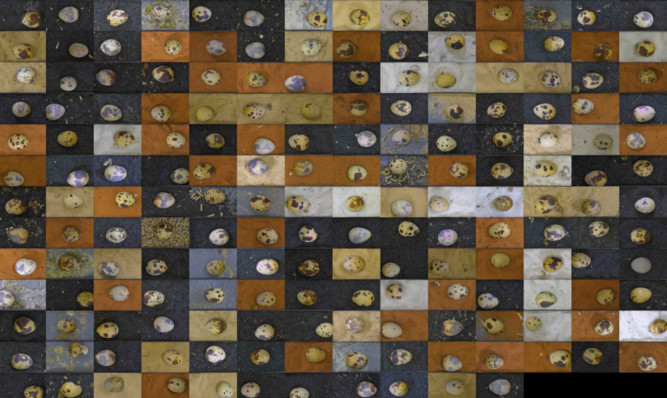It was intended to be nothing more than an image to accompany a scientific paper on quail eggs.
But the creation of Abertay University psychologist Dr P. George Lovell has become an internet hit, capturing the imaginations of people all over the world.
Some have said they wish they could frame it and hang it on a wall and others have called for it to be reproduced as a poster.
The image resembles a tiled mosaic and is made up of 179 photographs of eggs, each of which has a different pattern and was photographed where it was laid over a two-week period by 16 Japanese quail.
It was being used to demonstrate that the birds use a form of camouflage when laying their eggs, choosing a background that makes it difficult for predators to spot them.
Since being released, the image has taken on a life of its own, drawing comments from people in China, Japan, the USA, Canada, Germany, France, Belgium and Australia.
Dr Lovell said: “The image shows all the eggs that were laid during our study and in it you can see that there are lots of different colours and patterns.
“That’s partly because quail all produce eggs with their own individual patterning. Some are pale with just a few spots and speckles, while others are covered in large, dark brown splotches.
“But you can also see that the eggs are sitting on different coloured backgrounds, and that’s because, in the study, we gave the birds a choice of four different coloured sands on which they could lay their eggs.
“What we found was that, when given these options, the quail were able to choose the location that offered their eggs the best camouflage in other words, that made them most difficult to see.
“This was interesting to us because it suggests that the quail know what the patterning on their egg is going to be before they lay it and try to maximise this camouflage by choosing a laying location appropriate to their own individual egg patterning.”
